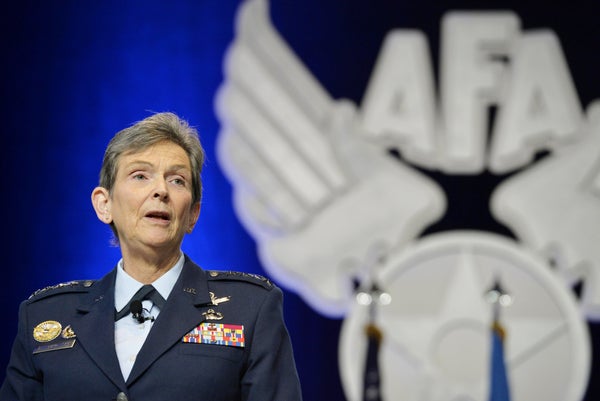This article was published in Scientific American’s former blog network and reflects the views of the author, not necessarily those of Scientific American
I wouldn’t be here today if my earliest role model had listened to advice.
My mom, born in 1928 with a malformed heart valve, didn’t have the option to undergo open-heart surgery. Medical expertise suggested she might not live past the age of six, and having children would be impossible. Her heart would not survive it.
Mom still deliberately chose her own life’s path: to have no fear in accomplishing what might concern others and to live each day to its fullest. In her view, there were no barriers. I’m here today to prove that.
On supporting science journalism
If you're enjoying this article, consider supporting our award-winning journalism by subscribing. By purchasing a subscription you are helping to ensure the future of impactful stories about the discoveries and ideas shaping our world today.
That outlook accompanied me to the New Jersey Institute of Technology in 1974, at a time when few women were engineering students and fewer joined the Air Force Reserve Officers’ Training Corps to pursue a military career. I knew I wanted to be an engineer. I didn’t know if I had grand ambitions for military service beyond four years.
My experiences as a woman in the military are, to some degree, hard to distinguish from those of an engineer anywhere. Attitudes that presented challenges then were as much prevalent in society as they were in military service. In the military, there were more direct institutional barriers concerning things like becoming a pilot or a navigator. While on the engineering school side, those obstacles were less spoken but more understood.
The challenges of those days looked like this:
I was ineligible to apply for an ROTC scholarship my first year of college—they were not available to freshmen women. Future pilots were awarded those scholarships, and women couldn’t be pilots back then.
I married a fellow ROTC cadet, and my earliest military assignments were driven largely by his career. He was a B-52 radar navigator, and my jobs followed the service’s need for those navigators. It was a time when joint careers presented a logistical challenge for spouses.
In the classroom, I had a professor who started every class with, “Gentleman, this is what we’re going to do today.” And, as a young officer, an instructor said to me, “You did really, really well, far better than I ever thought any woman would do in this group, but I'm not going to make you a distinguished graduate. These other male officers need it more. They’re going to be generals someday.”
Discouraging could be one way to describe those experiences. But those moments fueled me to recall my mom’s resolve of not letting anything stand in her way.
While there was no scholarship my freshman year, I spent time working a summer and then part-time in industry. That experience prompted me to realize that I wanted to use my talents for a greater purpose. My sophomore year I signed an ROTC contract, and I was a scholarship recipient the next year.
I excelled at the jobs I was placed in when following my husband’s assignments. My first job was in a lab that analyzed samples monitoring for nuclear weapons–grade materials—materials adversaries could be using to create their own nuclear weapons. Before long, I got promoted. It was the first of a few early promotions. The Air Force eventually offered us the opportunity to move together with assignments in our own career fields.
The Air Force continued to connect me with opportunities that offered something new and interesting. I learned that I loved orchestrating big projects, pulling everybody together and focusing on delivering a capability that could literally save lives. I’ve often cited my time as the director of the Airborne Laser Program—a technology that would be tested to shoot down Scud missiles—as one of my career highlights.
In 2005 I pinned on my first star as a brigadier general, proving wrong that instructor whose “expertise” informed me that the rank would never be affiliated with my name. Ten years later, in a ceremony attended by my two daughters, I pinned on my fourth star and achieved a rank that only two other women in the Air Force had earned before me.
As the Air Force celebrates its 70th birthday this year, it is remarkable to think how far we have come. There is still work to do, as there always will be, but I am living testament to the miles we’ve flown—in my case on the wings of a great role model.
My mom’s legacy of accomplishing fearlessly has, without a doubt, shaped the whole of my life and career. It’s through her determined approach that I learned challenge could eventually translate into opportunity. That’s how my journey to four stars was inspired by one very strong-willed heart.
